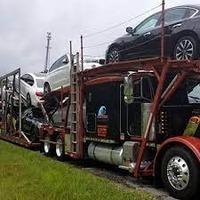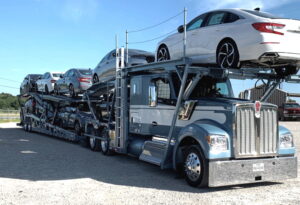Category Archives: Vehicle Transport Services
What do snowbirds do about cars?
Snowbirds flock south each winter to escape the cold weather up north Vehicle Transport Services. However, this seasonal migration poses an interesting challenge – what to do with their vehicle?
In this article, we will explore the different options snowbirds have when it comes to their cars and make the most practical choice based on their needs and budgets.
Sell the Car
One option is to simply sell the vehicle before heading south for the winter months. This eliminates any maintenance or insurance costs while it sits unused. However, snowbirds need to consider a few factors:
- Timing the sale: Snowbirds will get a better price selling in the spring or summer rather than right before leaving in the fall when demand is lower.
- Getting a fair price: Evaluate the car’s current value realistically based on its condition, mileage and market rates. Be prepared to negotiate.
- Downsizing expenses: Selling the vehicle means snowbirds will need new transportation once back north. This requires additional costs that factor into the decision.
- Owning two cars: For some, it may make more economic sense to keep their northern vehicle and purchase a cheaper used car for southern trips to avoid the hassle of selling/buying each season.
Store the Car
Rather than selling, many snowbirds choose to store their vehicle for the winter months Vehicle Transport Services. This allows keeping the same car year after year without having to repurchase. Some storage options to consider:
Paid Storage Facilities
- Indoor, heated storage is most secure but also the most expensive at $50-150/month.
- Outdoor lots offer less security for $30-80/month but expose the car to weather which could lead to issues.
- Climates extremes like snow/ice should be avoided as it can damage seals, hoses, electronics over time.
Friends/Family Storage
- See if trusted contacts can store the car free/low cost in their garage or driveway while away.
- Ensure proper insurance is in place in case of any damages during storage period.
At Home Storage
- Park in the driveway covered and disconnect the battery to prevent draining.
- Consider parking in the garage if it’s not regularly used for other purposes.
- Homeowners insurance should cover against theft/damages on the property.
No matter where stored, cars will need basic maintenance like washing, waxing, interior cleaning and filling tires with nitrogen before and after winter to prevent molds/corrosion. This adds to storage costs but protects the investment.
Drive South
For snowbirds who want the flexibility of having their own vehicle at both locations, driving south may be the only option. However, this does have some expenses:
- Fuel costs for the one-way trip which can exceed $300 depending on the vehicle’s fuel efficiency and distance.
- Wear and tear on vehicle from the extra miles will decrease its resale value faster.
- Time spent on the road instead of flying direct. Most one-way trips are 2-5 days accounting for stops.
- Additional insurance coverage is needed while vehicle is parked and stored long term in another state. Rates may increase 5-10%.
To offset these costs, driving allows bringing more belongings without luggage fees. It also gives snowbirds their own transportation immediately upon arrival south. For RVs or vehicles with sentimental value, driving ensures they’re not left abandoned in storage for months.
Rent Vehicles Seasonally
For occasional drivers or those wanting a vehicle only for short errands occasionally while visiting friends, renting provides flexibility without long term costs:
- Rental cars start at $25-50/day plus mileage fees depending on company, dates and demand. Weekly or monthly rates offer savings.
- One-way rentals have extra fees but drop car in one location and pick from another.
- Leasing for 3-6 months often gives steep monthly discounts versus daily rates. Requires long term insurance coverage.
- Car sharing services allow renting by the hour and offer lower costs for brief, infrequent trips.
- Rental RVs are ideal for exploring new areas versus towing their own when full timing Isn’t an option. Costs average $100-250/day.
Renting avoids depreciation on a personally owned vehicle left unused for extended periods. Downside is less flexibility with mileage caps and rental availability. Maintenance and unexpected repair costs are also not the renter’s responsibility.
Recommendations
The best option depends on individual needs, budgets and vehicle factors:
For occasional drivers:
Rental cars provide a pay-as-you-go solution without long term obligations or costs. Opt for leasing or car sharing services for major trips.
Sentimental vehicles:
Drive south yourself to ensure safekeeping of special interest/antique cars versus leaving unattended for months.
Full-time RVers:
Continue using your RV year-round by finding seasonal parks near family for visiting between travels. Treat it like a rolling second home.
High value cars:
Indoor, secured storage is worth it for expensive collectibles to avoid depreciation or potential damages from outdoor lots.
Northern vehicles for sale:
Time sales for peak seasons when relocating to cash in on higher prices versus trying to rush a deal right before leaving.
Vehicle Transport Services – Tight budgets:
Consider selling the car and coordinating transportation with friends/rentals as needed or opting for a cheaper used second vehicle just for southern trips if owning two cars makes financial sense long term.
Doing the math to account for all variable expenses is key. With careful planning, snowbirds can make cost-effective choices regarding their vehicles that allows comfortable travels and winters away while protecting their investment.
Open communication with family may also reveal free storage options that help reduce out-of-pocket expenditures. With a seasonal routine established, snowbirds can migrate south hassle-free each year.










